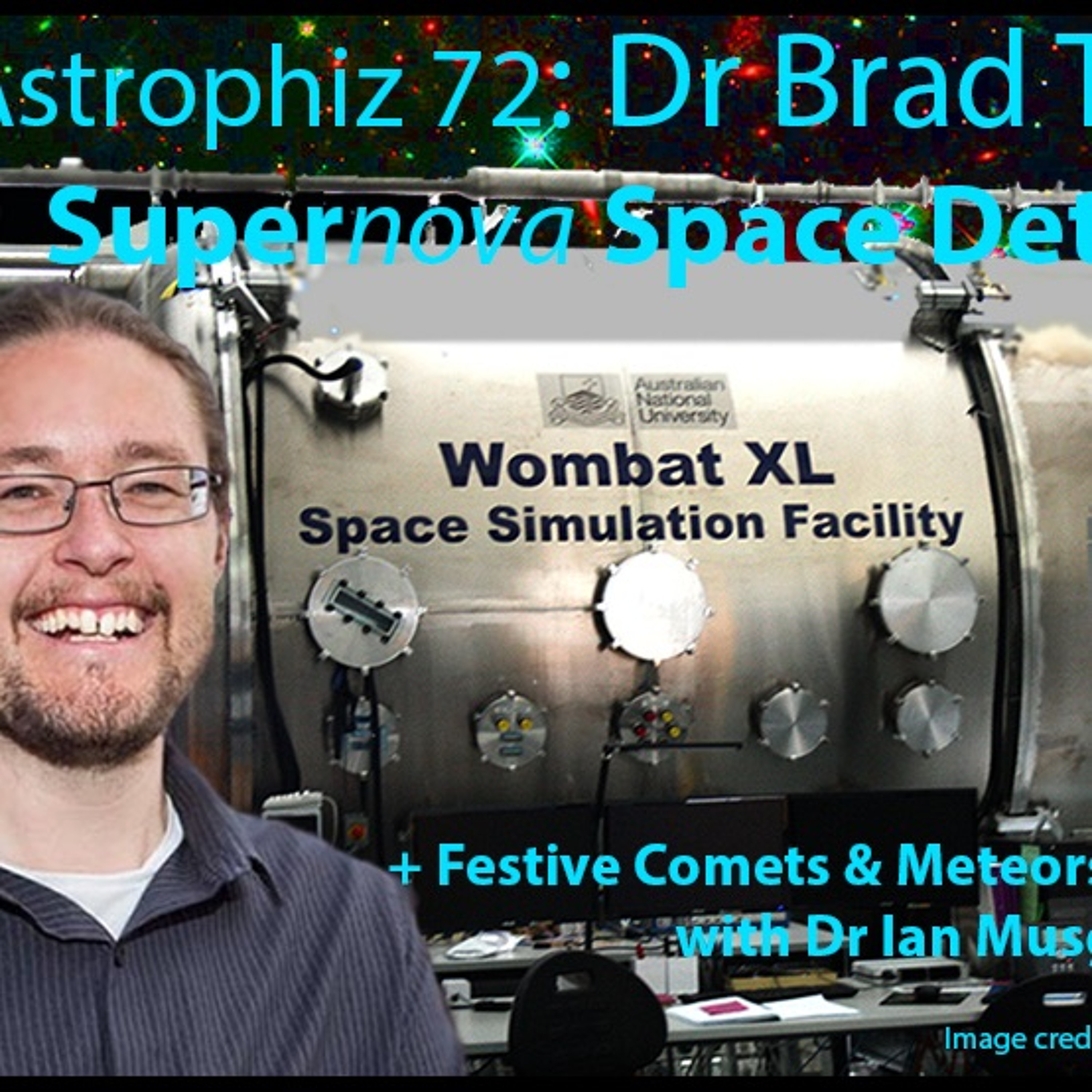Astrophiz72-Dr Brad Tucker-Supernova Space Detective

b"Astrophiz 72: Dr Brad Tucker ~ SUPERnova Space Detective\\n\\nBrad tells us about his research using the Keppler Space Telescope and how its successor TESS is generating great science already. He tells us how astrophysicists use a variety of tools to measure how the universe is changing over time. He explains how remote observing has radically changed the way astronomy is done around the world and how we now use telescopes with 100 times the light collecting area of the Hubble telescope and use lasers to correct for disturbances in the atmosphere. If you thought your 12 inch Dobbie was big, and it is, consider that researchers are now building telescopes with 25 to 30 metre mirrors.\\n\\nIn our regular segment for astrophotographers and observers, Dr Ian 'Astroblog\\u2019 Musgrave presents \\u2018What\\u2019s Up Doc?\\u2019. In this episode he tells us about the planets, the geminid meteor shower and comets currently visible to the naked eye.\\nIn the News:\\n.1. Dr Brad Tucker & team find a unique Type 1A Supernova. \\n.2. Australian Home for our National Space Agency announced. \\n.3. The OSIRIS-REx spacecraft aimed three of its science instruments toward asteroid Bennu\\n.4. China's Chang\\u2019e 4 launched to the far side of the moon.\\n.5. Virgin Galactic had a successful Space flight.\\n.6. Parker Solar Probe made the closest-ever approach to a star.\\n.7. JAXA\\u2019s Minerva II-1 rovers, have sent back 200 photos in the search for a suitable landing site on asteroid Ryugu. \\n.8. NASA\\u2019s Insight lander is sending home some great selfies as it prepares to drill 5 metres down into Mars to check its pulse with seismograph readings. \\n.9. Do a simple search on the internet for \\u2019the sound of Martian winds\\u2019 Thank\\u2019s to Insight, it\\u2019s the first time we have eavesdropped on the breath of another planets winds. It\\u2019s pretty eerie. \\n.10. The Parkes Telescope and the NASA/CSIRO DSN at Tidbinbilla have confirmed that Voyager II has powered on beyond the heliosphere."